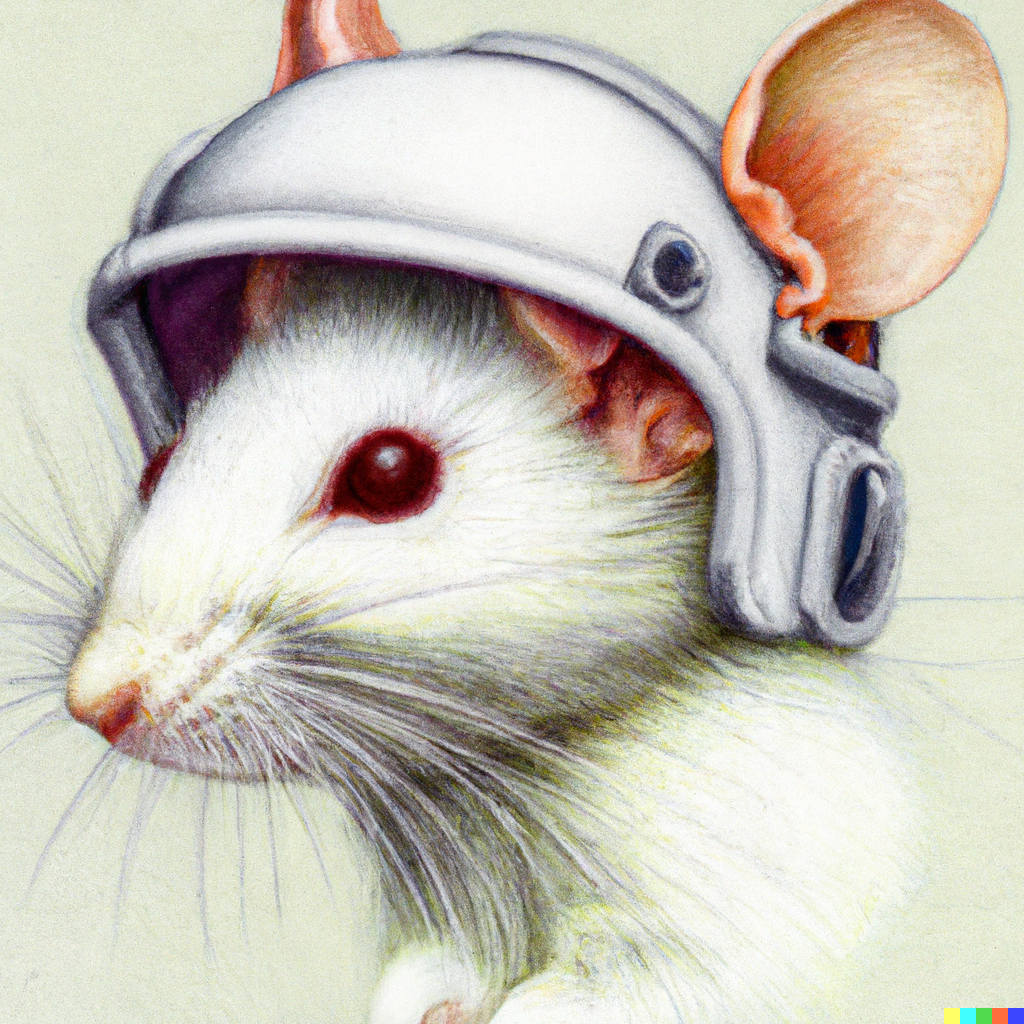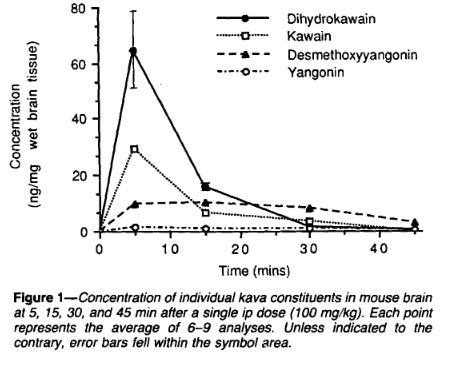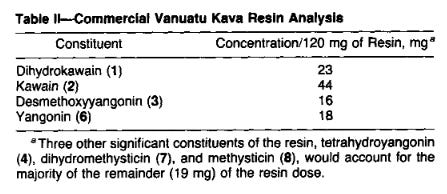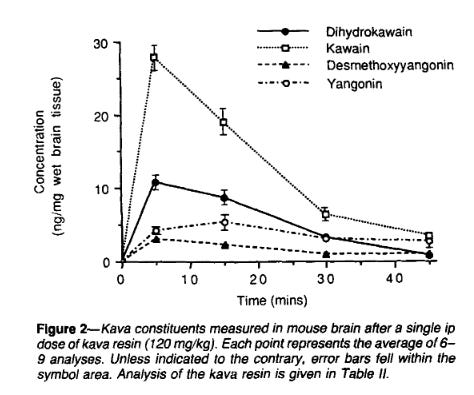Kava, a traditional beverage made from the root of the Piper methysticum plant, has been consumed for centuries in the Pacific Islands for its calming and relaxing effects. The active compounds in the rootstock, known as kavalactones, are responsible for these effects. However, the understanding of how these lactones interact with the brain and each other has been a subject of ongoing research.
One of the most significant studies in this field was conducted by Keledjian et al in 1988. This research is still cited frequently in related studies, and its findings continue to be highly relevant. The study focused on the activity of individual lactones versus full spectrum extracts, examining their brain concentrations and absorption rates in mice.
Individual Kavalactone Concentration in Brain Matter:
The researchers began by injecting mice with 100mg/kg of each kavalactone, calculating the dosage for a 25g mouse to be 2.5mg of each kavalactone. They then studied the physical brain material to ascertain the concentration level of these lactones. The results were as follows:
- Kavain: 29.3ng/mg in brain tissues
- DHK (Dihydrokavain): 64.7ng/mg in brain tissues
- DMY (Desmethoxyyangonin): 10.4ng/mg in brain tissues
- Yangonin: 1.2ng/mg in brain tissues
These findings provided a detailed understanding of how individual kavalactones were absorbed into the brain.
Full Spectrum Lactone Concentration in Brain Matter:
The study also included an examination of full spectrum extracts. The researchers tested a 120mg/kg full spectrum extract on the mice, and the results were documented in a table, showing the breakdown of each constituent.
The study’s findings suggested that the synergism of pharmacological activity was due to the potentiation of penetration into the brain when the compounds were given together instead of separately. This was a groundbreaking discovery, as it indicated that the combination of kavalactones could have a more profound effect on the brain.
Interestingly, Yangonin and DMY were found to be relatively ineffective when taken orally. However, when given in combination with full spectrum extracts, a marked increase in action was observed. This led to the suggestion that the absorption of lactones in the intestines might increase when all the kavalactones are together.
The Entourage Effect:
The concept of the entourage effect emerged from this study. By analyzing the figures and comparing the absorption rates of individual lactones with full spectrum extracts, it was observed that DHK remained about the same, while all other kavalactones increased in absorption significantly. Yangonin, in particular, saw an increase of about 20 times its application alone.
This evidence began to support the idea that an entourage effect is strongly at play when considering the physiological actions of kava. The entourage effect refers to the synergistic interaction of compounds, where the combined effect is greater than the sum of individual effects.
Conclusion:
The study by Keledjian et al has played a pivotal role in understanding the complex interactions between kavalactones and the brain. It has shed light on the importance of consuming the constituents together, highlighting the potential benefits of full spectrum extracts.
The findings also opened doors for further research into the entourage effect, which could have broader implications for the pharmaceutical industry and the understanding of other herbal medicines.
The continued relevance of this study underscores the complexity of kava’s pharmacology and the importance of rigorous scientific inquiry in unraveling the mysteries of traditional herbal remedies. It also emphasizes the potential of this amazing plant as a subject for further exploration, not only in the context of traditional consumption but also in potential therapeutic applications.
Keledjian, J., P. H. Duffield, D. D. Jamieson, R. O. Lidgard, and A. M. Duffield. 1988. “Uptake into Mouse Brain of Four Compounds Present in the Psychoactive Beverage Kava.” Journal of Pharmaceutical Sciences 77 (12): 1003–6. https://sci-hub.st/10.1002/jps.2600771203







